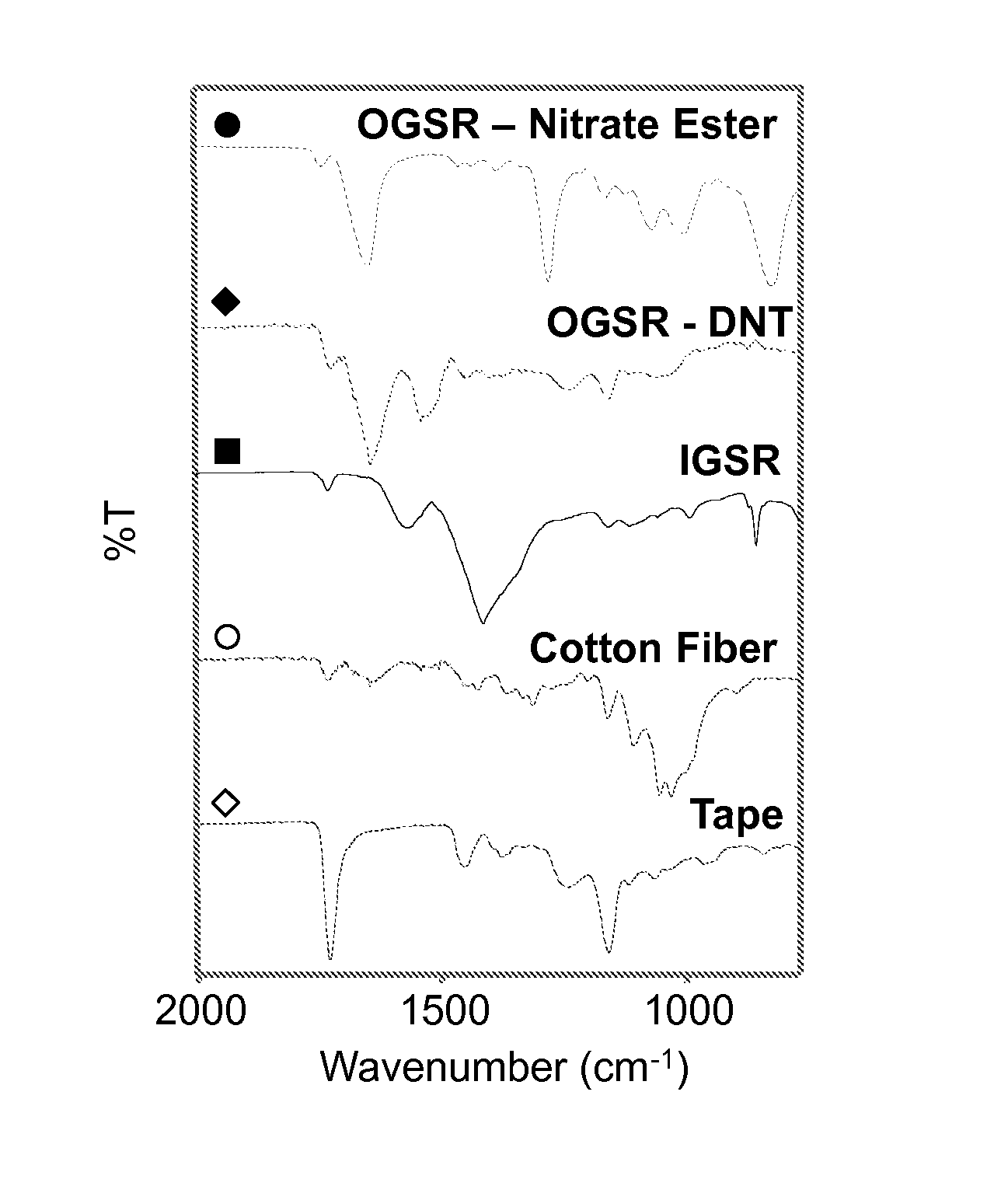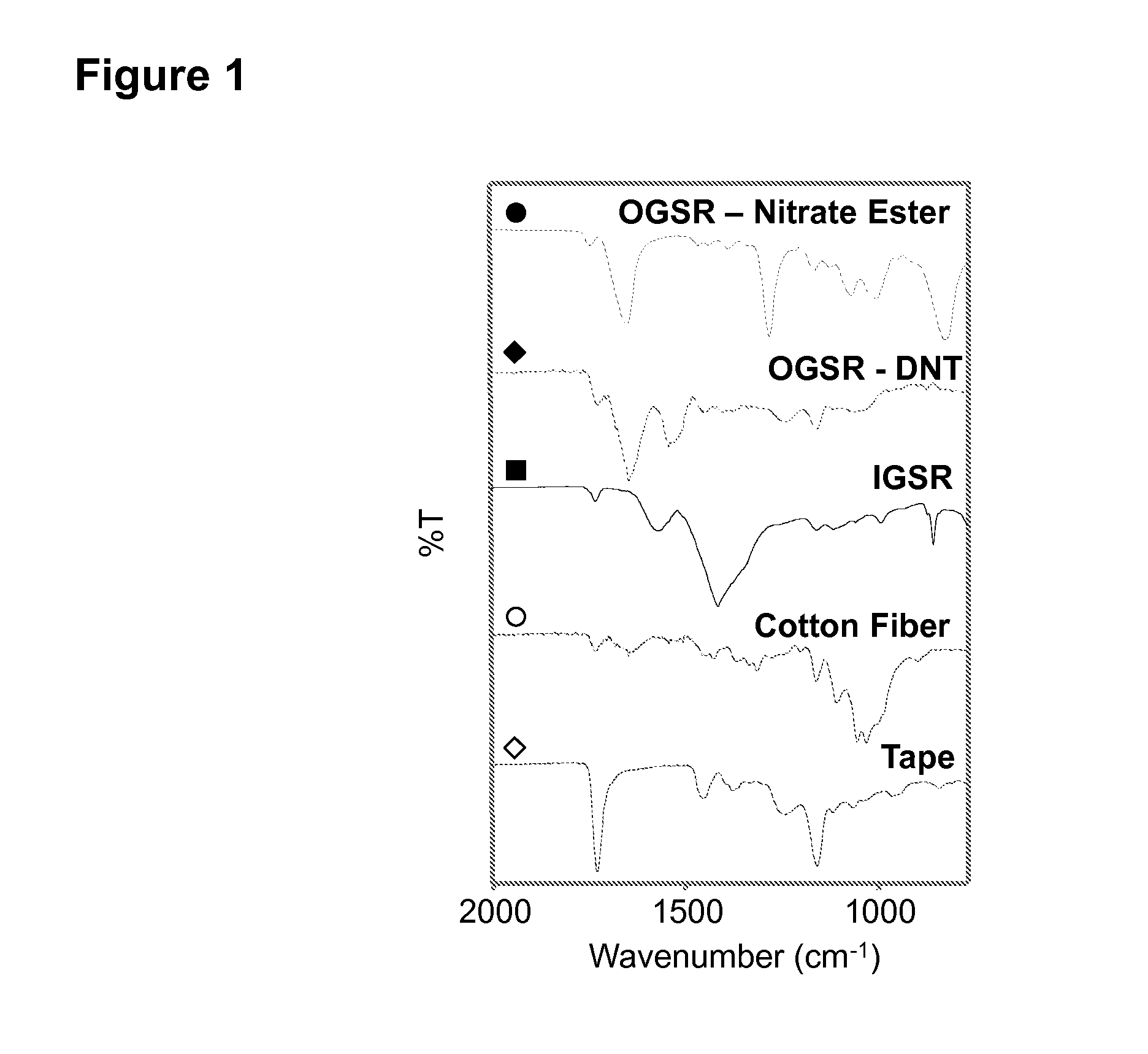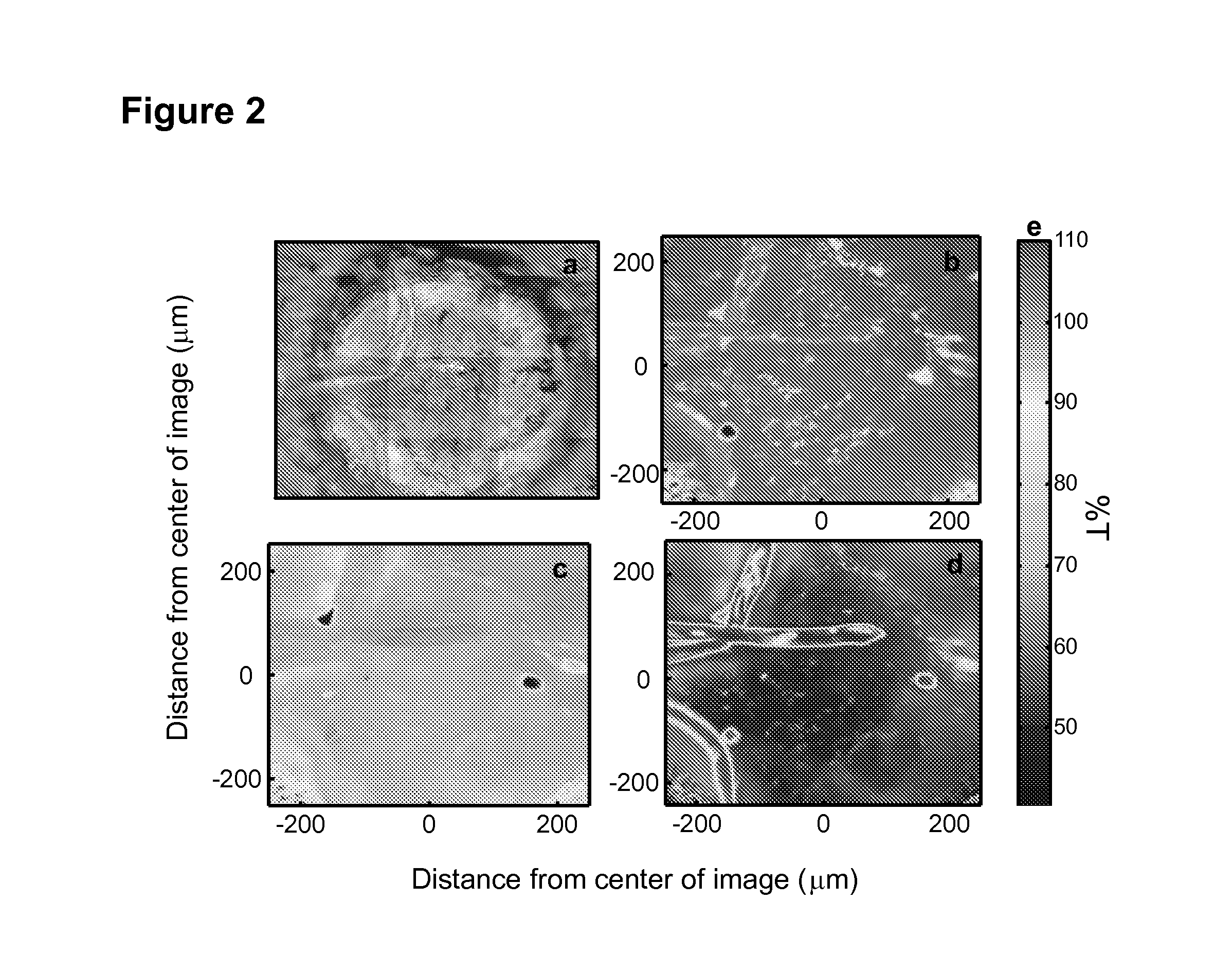Spectroscopy for gunshot residue analysis
a technology of spectroscopy and gunshot residue, applied in the direction of material analysis through optical means, instruments, weapons, etc., can solve the problems of difficult recovery, detection and preservation of discharge samples, inability to perform sem analysis of tape collection substrates, and relatively expensive instruments and time-consuming analyses, etc., to achieve more sensitive detection, time and cost-effective, and more labor.
- Summary
- Abstract
- Description
- Claims
- Application Information
AI Technical Summary
Benefits of technology
Problems solved by technology
Method used
Image
Examples
example 1
GSR Collection
[0060]GSR samples were generated by discharging 0.38 in. caliber Winchester brand “0.38 special” ammunition from a Smith and Wesson Model 10 Revolver and 0.40 in. Federal brand “S&W” full metal jacketed ammunition from a Smith and Wesson M&P 40 firearm. The firearms were discharged approximately 0.3 m away from a cloth collection substrate. For real world applications of this method, the cloth substrate mimics the clothing of a shooting victim or suspect. 3M brand double-sided PSA tape (common office tape) was utilized for tape lifting. Pieces of tape were adhered to a 1×1 in. glass microscope slide. PSA tape is composed of an acrylic polymer adhesive layer, supported on a hydrocarbon backbone (Toyama et al., J. of Applied Polymer Sci. 17:3495 (1973), which is hereby incorporated by reference in its entirety). The available side of the adhesive tape was pressed against the cloth discharge substrate to collect the GSR particles. Several macroscopic (>500 μm diameter) GS...
example 2
ATR-FT-IR Microscope
[0061]Micro-ATR-FT-IR imaging was performed with a Perkin Elmer Spotlight 400 IR Microscope and Spectrum 10 software. The 1×1 in. glass microscope slides with the adhered tape and GSR samples were placed under the micro-ATR objective. The micro-ATR objective utilized to collect the IR images was composed of a germanium crystal with a 600 μm tip. The tip of the Ge crystal was kept in constant contact with the surface of the samples due to a spring mechanism. This mechanism allowed the crystal to navigate the three-dimensional sample surface. The depth of penetration of the evanescent wave was 0.65 μm. 500 μm2 areas of the tape substrate were mapped individually. A mercury cadmium telluride (MCT) detector array allowed for the collection of an ATR-FT-IR spectrum every 1.56 μm (pixel size). 320 spectra were collected in both the X and Y directions, and, therefore, each IR image is the representation of 102,400 pixels, each corresponding to one ATR-FT-IR spectrum. Th...
example 3
[0062]For SEM analysis, OGSR particles with diameters of approximately 500 μm were manually deposited on adhesive carbon discs obtained from Ted Pella, Inc. The discs were mounted on SEM stubs. Police typically use these adhesive discs for GSR collection and detection, since they are conductive, stable under an electron beam and in a vacuum. All of these properties are required for SEM analysis. SEM / EDS analysis was performed by Evans Analytical Group, Inc. A Hitachi 3400-N Variable Pressure SEM with INCA software (Oxford Instruments, Inc.) was used for the acquisition of electron images and collection of elemental spectra (EDS) from several OGSR particles. A magnification of 100× was used to obtain the SEM images. An accelerating voltage of 20 kV was utilized. EDS spectra were collected over a range of 0 to 10 keV.
PUM
| Property | Measurement | Unit |
|---|---|---|
| size | aaaaa | aaaaa |
| size | aaaaa | aaaaa |
| size | aaaaa | aaaaa |
Abstract
Description
Claims
Application Information
 Login to View More
Login to View More - R&D
- Intellectual Property
- Life Sciences
- Materials
- Tech Scout
- Unparalleled Data Quality
- Higher Quality Content
- 60% Fewer Hallucinations
Browse by: Latest US Patents, China's latest patents, Technical Efficacy Thesaurus, Application Domain, Technology Topic, Popular Technical Reports.
© 2025 PatSnap. All rights reserved.Legal|Privacy policy|Modern Slavery Act Transparency Statement|Sitemap|About US| Contact US: help@patsnap.com



